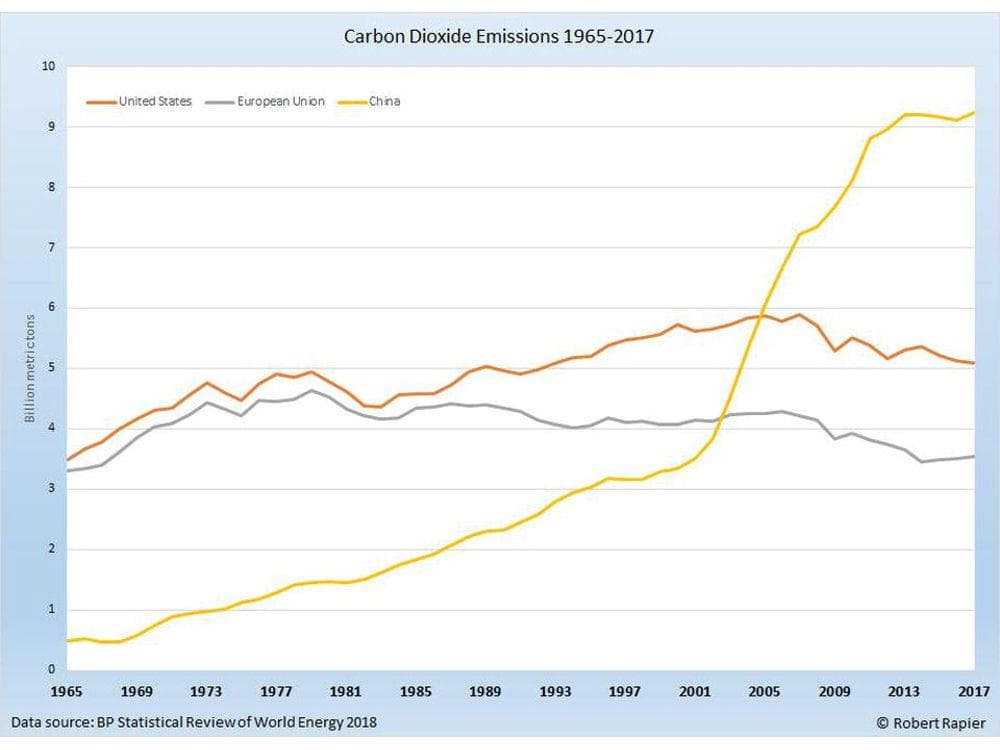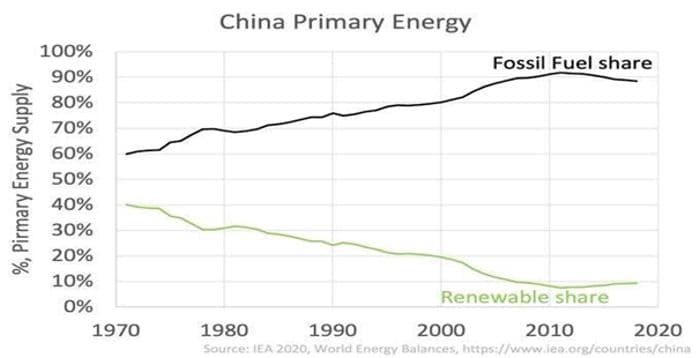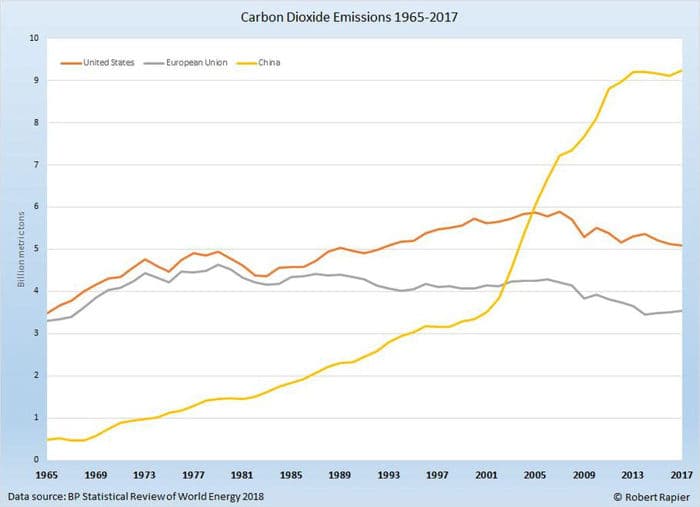China is the most populated nation on earth. China also has the second largest economy among the nations of the earth. China is a signatory to the Paris Accords, which recognize it as a developing nation. China is also earth’s largest CO2 emitter, producing more than 28% of earth’s anthropogenic CO2 emissions. These factors make China a major force in the global effort to reduce anthropogenic CO2 emissions under the Paris Accords.
Prior to COP 21, nations were asked to submit Intended Nationally Determined Contributions (INDCs) toward the COP objective of reducing global carbon emissions. China’s INDC is summarized as follows:
- To achieve the peaking of carbon dioxide emissions around 2030 and making best efforts to peak early;
- To lower carbon dioxide emissions per unit of GDP by 60% to 65% from the 2005 level;
- To increase the share of non-fossil fuels in primary energy consumption to around 20%; and
- To increase the forest stock volume by around 4.5billion cubic meters from the 2005 level.
China is clearly making an effort to peak annual CO2 emissions early, as shown in the graphs below. However, they have been far less successful in increasing the share of non-fossil “fuels” in primary energy consumption.


China currently plans to build an additional 250 GW of coal generation, a 25% increase over its current coal generating fleet. The increased CO2 emissions from these plants would be expected to increase China’s share of global annual CO2 emissions beyond 30%, even with the expected growth of coal generation in other nations.
China President Xi Jinping has announced that China would be “carbon neutral” by 2060, though the new coal plants currently under construction or planned would be expected to have operating lives of 40-60 years, so plants completed in 2030 would be expected to operate until 2070-2090.
China has also committed more than $20 billion for the construction of coal generating stations in other countries, including Bangladesh, Pakistan, Indonesia, Vietnam, South Africa and Zimbabwe. These power generating facilities would further increase global CO2 emissions.
The United Nations, through UNFCCC, is quick to excuse China’s aggressive increases in annual CO2 emissions on the ground of “Environmental Justice”, essentially accepting the Chinese position that its economic growth is a greater current imperative than reducing CO2 emissions in the interest of averting a “climate crisis”, or a “climate emergency” or an “existential threat”. Apparently only CO2 emissions from developed countries would contribute to a “climate crisis”.
The UNFCCC and the developing nations appear willing, even anxious, to watch the developed countries commit economic suicide while they focus on accelerating their economic development.
We are frequently told of the environmental benefits and economic superiority of renewable energy sources, though the developing nations appear to disregard renewables in favor of coal, oil and natural gas. The developing countries are clearly making major investments in fossil fueled electric generation to support their future economic growth, while the developed countries focus on renewables as the path to their economic decay.
Something seems wrong about this picture.


